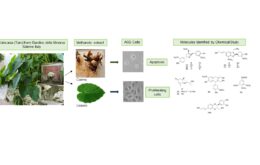The aim of this work was to make a critical comparison between Mediterranean medieval and modern dermocosmetic remedies, analyzing the work of the so-called “Trotula de Ruggiero”. Traditionally Trotula de Ruggiero is believed a female doctor of the 11th century teaching and working inside the illustrious “Medical School of Salerno,” and devoted to the promotion of female care, beauty, and well-being. We analyzed De Ornatu Mulierum with a multidisciplinary scientific approach ranging from botany to pharmaceutical chemistry and technology, pharmacology and pathology. Medicinal plants and remedies were analyzed for their biological properties in light of current scientific knowledge. A critical comparison between medieval and modern dermocosmetics is reported also taking into consideration the chemical, pharmaceutical, and technological literature. Beyond the obvious changes in the paradigms of cosmetology and the different beauty canons of the Middle Age with respect to the Third Millenium, our research emphasizes the attention of the medieval skincare routine to female care, beauty and well-being as well as the extraordinary combination of tradition and modernity of De Ornatu Mulierum.
year 2022 July 12 – First published
authors Pisanti, S.; Mencherini, T.; Esposito, T.; Sansone, F.; D’Amaro, V; Re, T.; Bifulco, M; Aquino, R. P.
typology: Scientific Article – Journal of Cosmetic Dermatology – First published: 12 July 2022 – Open access- Epub ahead of print. PMID: 35822229.
ref. (DOI): https://doi.org/10.1111/jocd.15234



